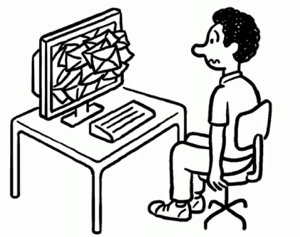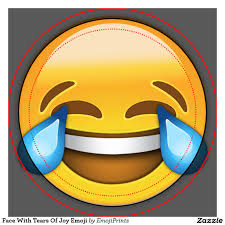NOTE: As 2015 winds down, so will 'regular' posts on the blog. For the next two weeks, I will be posting what I thought were the most interesting pieces I published in 2015. These were not necessarily the most popular or most shared, just the ones I think were most representative of the year in HR, HR Tech, workplaces, and basketball. Hope you enjoy looking back on the year and as always, thanks for reading in 2015.
Next up a piece from March, just one in my years-long series of obsessive posts about email, Poker dating, and responding to email: It is all about the timing.
Poker, dating, and email: It is all about the timing
Good poker players will tell you, at least I am pretty sure they will tell you, that no matter if your cards are good, bad, or somewhere in between, that a smart player will respond and react to the betting action in a consistent manner. If you call or raise a bet too quickly or eagerly, that might be a 'tell' that you are holding some great cards and can't wait to get more money into the pot. Similarly, waiting and belaboring a decision to call a bet could signal a comparatively weak hand, and embolden your opponents.
So the smart play is to find and maintain a consistent rhythm or cadence to your reactions and decisions, good cards or bad, and eliminate at least one source of intelligence for the other players. Don't get too twitchy, don;t wait too long to move, and you maintain some control of both your emotions as well as the table.
I suppose the same argument could be made in dating where guys have, for pretty much forever, had to figure out how quickly to call after an initial meeting and exchange of phone numbers, or a positive first date. Call too soon then you come off too eager and possibly creepy. Wait too long to call back and you might send off a 'I'm not really interested' vibe that inadvertently could short-circuit the relationship from the beginning. So it's a tough call (no pun intended), figuring out the proper 'wait' interval for the call so that you don't screw it up or send the wrong message.
This kind of 'How long do I wait to react?' dilemma pops up in all kinds of workplace situations as well - in when to speak up in meetings, following up after a job interview, and particularly one that stands out for me, the 'How long do I wait to respond to this email?' conundrum.
Here's the scenario I want you to consider. You send an important'ish email to a colleague - maybe your boss or a sales or job prospect, not one of your direct reports, the idea being the person you emailed does not have any kind of 'expected response time' commitment to your emails. But you are eager for a response nonetheless. Then this person sits on your email for a bit. Maybe a day, maybe two, maybe even a week. Again, they don't really 'owe' you a reply in any specific timeframe, but they 'should' get back to you at some point. So a few days pass, let's say about six, then you finally get a reply back to the email that for which you've been eagerly waiting.
And now the moment of truth, like the poker player having to decide how long to wait before pushing in your chips, you have to determine when to reply to the reply, to the message that you waiting six long days to receive. If you immediately hit back, say within a half hour of getting the message you are sending out a couple of signals that you may not really want to send. First, you come off as a little bit desperate or at least over eager. You waited six days to get a response and you're firing back in almost real-time. You may just be excited, but you also could appear weak. And second, and maybe this is just a hangup I have, you set yourself up as someone who is constantly, perhaps obsessively, monitoring your Inbox. Most productivity folks recommend checking and responding to emails a couple, maybe three times a day. Getting an immediate reply back tells me you never stop looking at your email.
So what is the 'right' or best way to mange this situation?
Unless the subject matter is really urgent, or has some kind of hard deadline associated with it, I think you have to wait at least half as long to reply back than it took for you to get your original reply. So in our example if it took six days to hear back from your emailer, then you should be able to hold out for a couple, even three days to respond back. Waiting, at least a little, sends a couple of more positive messages. It shows you have other things going on besides waiting for that email. It shows that you took some time to actually think about your reply. And finally, it sort of but not quite evens the power dynamic between you and your correspondent.
So if you want to play the power game at the poker table of in your Inbox, take a little time before you re-raise and before you reply. You don't want to show what you're holding but acting too fast.
And to everyone waiting for an email reply back from me, I promise they are coming soon...

 Steve
Steve



